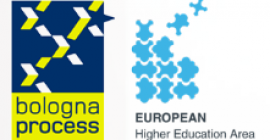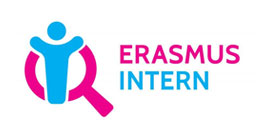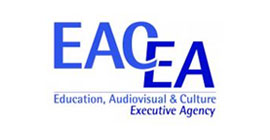Participant Identification code (PIC)
Registration of your organisation
Before submitting an application, all participants involved in the proposal must first be registered in the Portal Participant Register and have their 9-digit Participant Identification Code (PIC number).
You can verify directly on the Portal whether your organisation is already registered and has a PIC. If not, please proceed with the registration following the instructions on the same page (the Registration wizard will help you through the process). Once completed, you get the PIC to be used in your online application form and further correspondence with the EU services. If you do not have an user account (EU Login), you will first need to create one, before starting the registration process. If you already have a user account (EU Login), you can log in and directly start registration.
Before registering an organisation, check that it has not previously being registered:
Search for organisations by clicking ![]() . Then, search for organisations, enter the name or a part of the name. You may restrict results by selecting a specific country or expanding the advanced search and applying further filters to the search criteria. The click on Search organisation to display the matches.
. Then, search for organisations, enter the name or a part of the name. You may restrict results by selecting a specific country or expanding the advanced search and applying further filters to the search criteria. The click on Search organisation to display the matches.
Your key to EU grants and tenders: the Participant Identification Code (PIC) https://www.youtube.com/watch?v=fp86eFuo1Z0
What you need to register your organisation
To register your organisation, you will need to provide basic administrative and legal information, in addition to contact details.
Get ready
Since the declared information will be verified against supporting documents later on, it is useful to have the relevant documents at hand when you complete the registration, to make sure you fill in everything correctly (legal form, non-profit, public/private, etc.)
Check for already existing PIC
In order to avoid creating duplicate PICs, you should first check whether your organisation (or another department) is already registered in the Portal and use that PIC.
Go to How to Participate > Participant Register > Search a PIC > Search a PIC and put in your organisation data. Check several variants to make sure there is really no entry.
If no PIC is registered, start registration
Go to How to Participate > Participant Register > Register your organisation. The Registration wizard will guide you step-by-step through the process.
Detailed explanations are available in the ![]() .
.
You do not need to complete the registration process in a single session. You can enter some information, save it and continue later on. To resume your registration, go to My Organisations > Continue Registration. Incomplete draft registrations are automatically deleted after one year.
If you create by mistake a new PIC, see Data updates.
PIC number
After completing a new registration, you will receive the 9-digit Participant Identification Code (PIC) — to be used in your online application form and further correspondence with the EU services.
The newly created PIC will be provisional (declared/non-valid status) until it is formally validated at a later stage.
Nothing else is expected from you after the PIC has been generated, the Central Validation Service will contact you later, to initiate the validation process.
Validation of your organisation
If your proposal is successful, you will be contacted for the validation of your PIC registration data.
Validation is needed only for certain types of participants (grants: Beneficiaries and Affiliated Entities; procurement: Contractors). It is not needed for Associated Partners, Subcontractors or other participants.
It will be done by the Central Validation Service which carries out the validation for all EU services using the Portal.
The Central Validation Service will contact the person who registered the organisation (Self-registrant) and ask them to:
• upload official supporting documents (via the My Organisations page)
• clarify any details.
The documents that are required will be listed in the notification you receive. You will need to fill out a legal entity identification form and provide us with an official VAT document, registration extract, statutes or act of establishment, etc. The detailed list of documents is also explained in the Rules on Legal Entity Validation, LEAR appointment and Financial Capacity Assessment.
The Central Validation Service will check that your organisation is legally recognised (has legal personality). If this is not the case (exceptionally this is allowed), you will have to prove that the representatives have the capacity to undertake legal obligations on the organisation's behalf and that the organisation has financial and operational capacity equivalent to that of legal persons.
The Central Validation Service will also check whether your organisation qualifies for some of the special legal statuses that are required for some funding programmes (private or public body, non-profit, international organisation).
The outcome of this process is the validation of your organisation (validated PIC). The Central Validation Service will send a confirmation message once the process is completed and the PIC is validated.
Please don't forget that all communications with the Central Validation Service must take place through the Participant Register (My Organisations page). Emails and other communications will NOT be accepted.
Please also note that if you apply for a call with specific eligibility criteria that are not validated by the Central Validation Service, these will be checked by the responsible EU service managing the call — in addition to the validation, which means that they may come back to you with additional questions.
Validation of the organisation is a prerequisite for the LEAR appointment.









